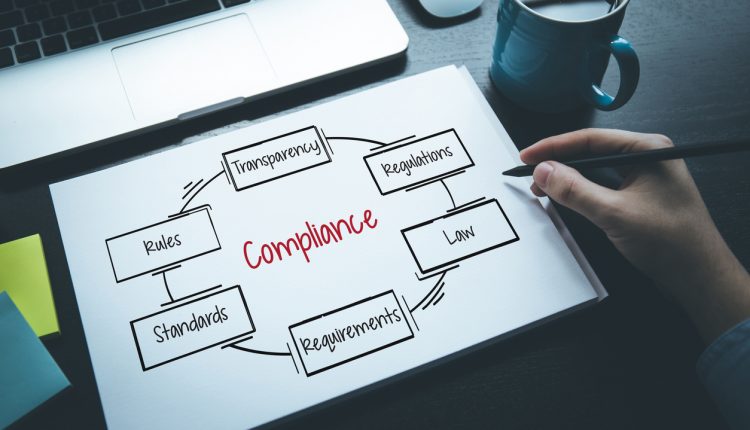How Can My Law Firm Comply with Data Regulations?
Technology is constantly changing, therefore staying compliant, especially in the face of cybersecurity and evolving variables, is an extremely arduous task; but there are some solutions.
This week Lawyer Monthly hears from Robin Ferris, Solutions Architect at Pulsant, on how law firms can manage compliance and regulatory challenges hand in hand.
Law firms hold a lot of data. This may be more sensitive than that of other businesses due to the legal privilege and confidentiality between firms and their clients. But company data will also concern employees and third parties of interest, and it all needs to be compliant. So how do those reasonable keep everything together, take on
Compliance is now an extremely high priority for businesses and requires cooperation from all employees across all areas of an organisation. However, meeting compliance requirements for the vast amount of data law firms hold is not easy and it can be very expensive. It’s important to understand which data is sensitive, what regulations apply and where is it held. Not an easy task when the data may be held in multiple locations; on premise, other offices, the cloud, or a combination of all three. And GDPR is just a small part of this.
Compliance is now an extremely high priority for businesses and requires cooperation from all employees across all areas of an organisation.
The challenge the legal industry is facing today is the ability to maintain the required level of data security, while allowing this data to be fluid and available to those that need to access it. Achieving compliance and maintaining it may be viewed as two sides of the same coin, but both are actually very different. Moving beyond simply achieving compliance and maintaining it are two different challenges.
Overcoming the challenges
As new technologies emerge, business transform, and clients change, existing compliance efforts may become undone. Only a continuous compliance approach can prevent this from happening.
There are additional challenges around continuous compliance. The NIST Cybersecurity Framework, for example, has close to 400 specific requirements that need to be met. When considering that this is one framework of many, it’s easy to understand the true complexity of the issue.
As new technologies emerge, business transform, and clients change, existing compliance efforts may become undone. Only a continuous compliance approach can prevent this from happening.
A lack of internal knowledge and understanding can also hamper continuous compliance efforts. Firms may not have the right skillset to translate compliance and controls in the physical world to the virtual world.
This begs the question: How can the legal firms of today overcome these challenges to successfully achieve continuous compliance in today’s ever-evolving technology landscape?
The answer depends upon individual business needs, but cloud technology can alleviate some of the burden through the elimination of hardware limitations.
Compliance in the cloud
While there are indeed technical and security-related obstacles to consider, the advantages that cloud technology has to offer from a compliance perspective certainly outweighs anything else. Businesses have already realised its potential in reducing operational complexities, and these benefits can also be transferred to the world of continuous IT compliance.
Most significantly, using cloud technology to monitor and control IT compliance offers a tremendous amount of transparency: being able to audit, query, alert and resolve any cloud infrastructure changes through virtual means is an incredibly powerful tool to have to hand. It can also deliver significant cost savings and streamline workflows through automating certain processes, simplifying reporting and cutting down on the number of compliance and reporting tools needed.
Using cloud technology to monitor and control IT compliance offers a tremendous amount of transparency: being able to audit, query, alert and resolve any cloud infrastructure changes through virtual means is an incredibly powerful tool to have to hand.
Looking more specifically at how this might help law firms achieve a continuous compliance approach, it largely comes down to unification. A cloud-based platform can enable firms to integrate all their relevant compliance-based data and information into a single view, thanks to the ability to consolidate any existing management tools and their respective data sources. When implemented and configured in the right way, this can provide operators with an intuitive compliance dashboard that combines data sources from across any organisation. It also enables automation and manual remediation to fix non-conformities and further prevent breaches.
The use of cloud technology also allows firms to continually track infrastructure and trigger instant alerts when necessary. Using pre-defined rules and the ability to add bespoke policies, a cloud-based platform can continuously pull information and check it against the controls it has in place to identify any instances of non-conformities, which makes it simpler to identify and resolve any issues.
Conclusion
Continuous compliance can seem a daunting prospect if IT is not a core competency. But data is a pivotal resource in most organisations; this is especially true for law firms. One thing to be certain of is that as businesses continue to generate more data, new regulations are as likely to follow.
Compliance is an organisational commitment and as the regulatory landscape continually shifts, firms must anticipate the effects of these new regulations. Continuous compliance provides a framework to work within and respond to any changes with a level of agility and effectiveness.




